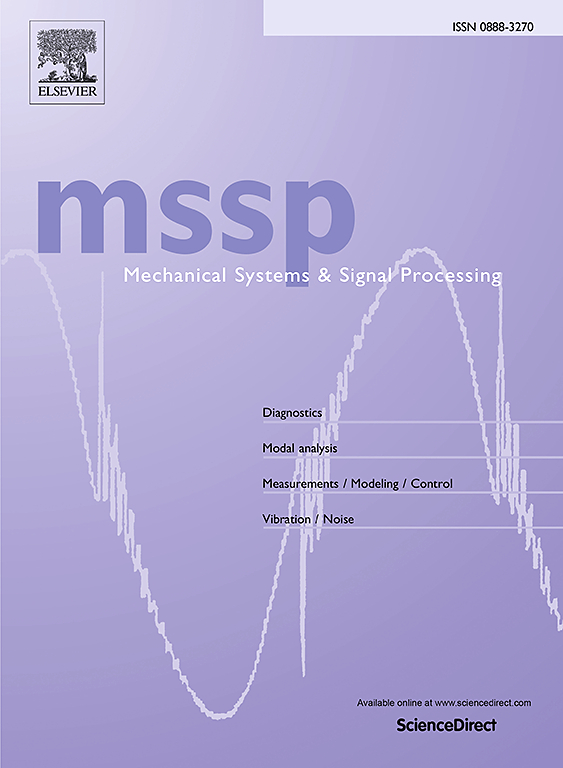A digital twin-enabled domain adaptation network for cross-space fault diagnosis of roller bearings
IF 8.9
1区 工程技术
Q1 ENGINEERING, MECHANICAL
引用次数: 0
Abstract
The accuracy of roller bearing diagnosis is crucial for ensuring the reliability and safety of mechanical systems. Data-driven methods, such as deep transfer learning (DTL), have been widely applied in fault diagnosis. However, the performance of these models is still limited in industrial scenarios due to the scarcity of labeled data for roller bearings and the complex operational conditions. This study introduces a digital twin-enabled domain adaptation network (DTDA) for the fault diagnosis of roller bearings across digital and physical space. In the digital space, a numerical model of a cylindrical roller bearing with its support housing is created based on the Augmented Lagrange multibody dynamics methodology. Typical fault modes, including raceway defects and cage pillar fracture, are accurately described in this model. A large amount of labeled pedestal vibration signals for corresponding defective roller bearings is then generated. For the physical space, defective roller bearings are machined, and a series of bench tests are carried out to obtain the vibration data of the bearing pedestal. A closed-set domain adaptation network based on DTL is developed to minimize discrepancies in data distribution from these two spaces. A bearing cross-space diagnosis task is constructed using labeled simulation data and unlabeled measurement data. The proposed digital twin-enabled fault diagnosis framework is experimentally validated, and the results demonstrate its superiority over the latest published methods.
滚子轴承跨空间故障诊断的数字双域自适应网络
滚子轴承诊断的准确性对于保证机械系统的可靠性和安全性至关重要。深度迁移学习(DTL)等数据驱动方法在故障诊断中得到了广泛的应用。然而,由于滚子轴承标记数据的稀缺性和复杂的操作条件,这些模型的性能在工业场景中仍然有限。本文介绍了一种跨数字和物理空间的滚子轴承故障诊断的数字双域自适应网络(DTDA)。在数字空间中,基于增广拉格朗日多体动力学方法建立了圆柱滚子轴承及其支承壳的数值模型。该模型准确地描述了典型的故障模式,包括滚道缺陷和笼柱断裂。然后生成相应缺陷滚子轴承的大量标记基座振动信号。对于物理空间,对有缺陷的滚子轴承进行加工,并进行一系列台架试验,获得轴承座的振动数据。为了减小两个空间的数据分布差异,提出了一种基于DTL的闭集域自适应网络。利用带标记的仿真数据和未标记的测量数据构建轴承跨空间诊断任务。实验验证了所提出的数字孪生故障诊断框架,结果表明其优于最新发表的方法。
本文章由计算机程序翻译,如有差异,请以英文原文为准。
求助全文
约1分钟内获得全文
求助全文
来源期刊

Mechanical Systems and Signal Processing
工程技术-工程:机械
CiteScore
14.80
自引率
13.10%
发文量
1183
审稿时长
5.4 months
期刊介绍:
Journal Name: Mechanical Systems and Signal Processing (MSSP)
Interdisciplinary Focus:
Mechanical, Aerospace, and Civil Engineering
Purpose:Reporting scientific advancements of the highest quality
Arising from new techniques in sensing, instrumentation, signal processing, modelling, and control of dynamic systems
 求助内容:
求助内容: 应助结果提醒方式:
应助结果提醒方式:


